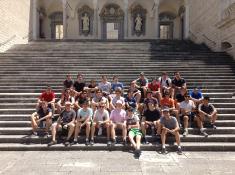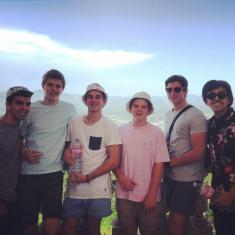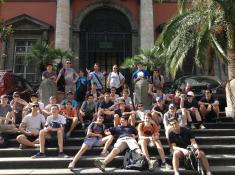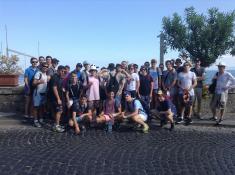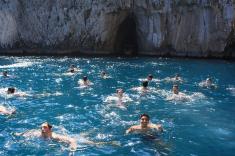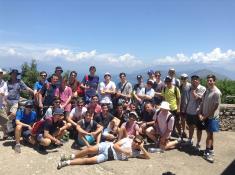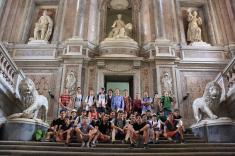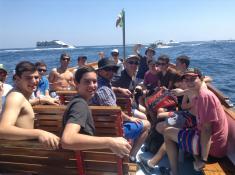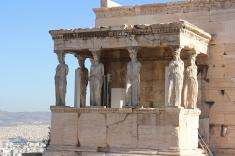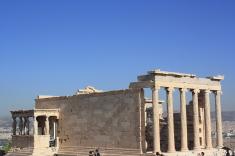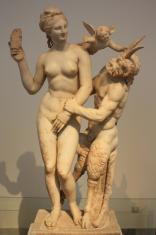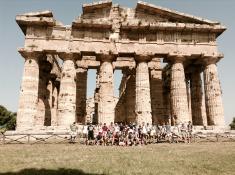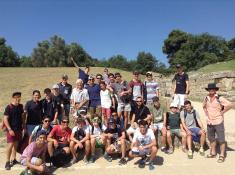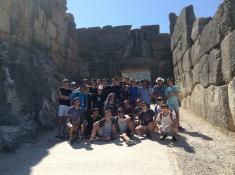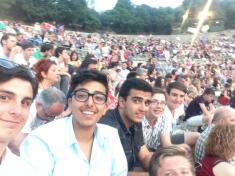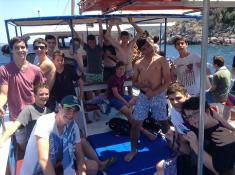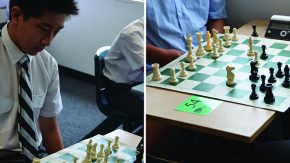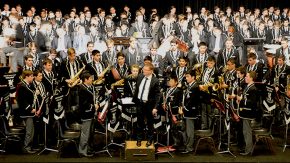A Tour of Classical Greece and Rome
Thirty excited History and Latin students and three intrepid teachers – Mr Pyne, Mr Fisher and Mr Chambers – rendezvoused at Sydney airport on the 21 June to begin their Classics tour. It was the start of the school holidays, and spirits were high. After a quick farewell, the group passed through customs and began the first leg of their journey.
Motivated by a desire to enrich their understanding of the Classical world, the students from Years 9-11 were keen to explore Italy and Greece. Among the destinations they would be visiting included a number of significant sites in the Renaissance, Baroque and Modern worlds which would give each boy a wonderful impression of the richness of European History.
Such a trip was bound to enhance the understanding of the Year 11 Ancient History students who would be visiting the sites of Pompeii and Herculaneum, core topics in their HSC courses.
In preparation for the tour, the boys had been asked to prepare a short presentation which they would deliver on the day they arrived at the site most relevant to their research area. Those boys who presented have then completed the day’s blog entry on the 2014 Classics Tour Blog. For those who would like to read an informative and comical account of the tour from the perspective of each of the boys, please click here.
After a 21 hour trip the group arrived in Rome and were ready to visit the Colosseum and the Forum, which was a rather overwhelming start to the trip. The hotel was situated near Termini Railway Station in Rome which enabled the group to walk through the streets of Rome to these locations. Happily coinciding with the 2014 Brazil Football World Cup, we were able to watch numerous games in different locations throughout the trip. It was disappointing, however, that both Italy and Greece exited early from the competition.
We had guides at all the major sites we visited in Rome, including the Vatican Museum and St Peter’s Basilica on the following day. One of the greatest pleasures was our walking tour through Rome to the Pantheon and Piazza Novona on our second morning where we enjoyed gelato and pizza. The group was coming together well by the time we took the three hour drive south via the rebuilt monastery at Monte Cassino to our next stop which would be in Sorrento for the next six days.
From our base in Sorrento we visited the wonderful sites of Pompeii, Herculaneum , Paestum, Caserta Palace, Oplontis, Pozzuoli, Solfatara, Capri, Mt Vesuvius and Naples. Memorable moments included jumping off the boat at Capri, climbing the volcano, fresh mozzarella, prosciutto and tomato rolls, the trips on the Circumvesuviana, and the eccentric guides we had for some of the sites. By this stage most of the blisters had healed on our feet and the boys were getting used to the fairly hectic pace and early starts of the tour. Many had even begun to experiment with a little Italian in the shops.
After about ten days travelling around the country it was now time to return to Rome and embark on the second leg of our trip to Classical Greece. Driving into Athens we got our first glimpse of the magnificent Acropolis crowned with the Parthenon. Our hotel was situated right over the metro which made it very easy to get around. Visiting the Acropolis, Agora and the Hill of the Pnyx on the following day was a great experience. The boys were also getting their first taste of Greece in the middle of Summer. For many, they were beginning to understand how nation states construct their own historical narrative and the visit to the new Acropolis Museum reinforced this concept. Understanding the role archaeologists play in conjunction with historians was a key objective of the trip.
Leaving Athens, the group then visited the sites of Marathon, Delphi and Olympia before arriving at Tolon, from where they would visit Mycenae, Nafplion and Epidavros. An opportunity to attend the play Helen by Euripides, one of the great tragedians of Classical Greece was taken up by a number of the boys accompanied by Mr Chambers and Mr Fisher. Swimming everyday was a great way to wash off the dust from these ancient sites. On the trip, it was decided the group would visit Crete and so they travelled to Rethymnon on the 7 July. Keen to see the Palatial society of the Ancient Minoans they visited, Phaistos, Knossos and the museum in Heraklion. It was interesting to see the impact the English archaeologist Sir Arthur Evans had on the site at Knossos and how the Cretans viewed his reconstruction of the palace complex. The much anticipated Gorge of Samaria walk was completed without mishap on the following day and the boys enjoyed a very welcome swim at the end of this 18 km trek. The last day in Crete saw the group visit the Commonwealth War Grave at Souda Bay where a number of Australian soldiers are buried having died during the Battle of Crete in WWII. In Chania, the group also visited the excellent maritime museum where the Australian campaign was further described. Even though guides were available at most of the sites, it was great to hear the students present to the group and this is an idea that the teachers will certainly maintain for future tours.
Although it only took 21 hours to arrive in Rome it was a 31 hour return trip from Crete to Australia and that journey began on the 11 July. Well used to these types of transfers the boys continually found things to do in the different airports. It was a fantastic trip, the boys were engaged and stimulated by both the extraordinary history and culture of these two countries and the teachers Mr Pyne, Mr Chambers and Mr Fisher ought to be congratulated for their energy, enthusiasm and excellent pastoral work with the boys.
While all the boys are home now physically, it’s a certainty that most are still reminiscing about their days in the sun in Italy and Greece.




